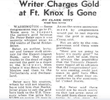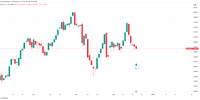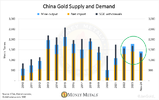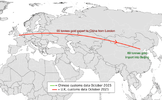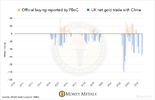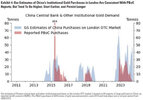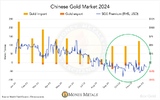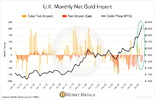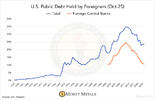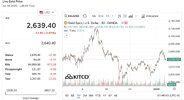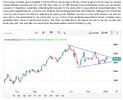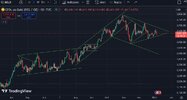- Joined
- 25 July 2021
- Posts
- 889
- Reactions
- 2,244
Below is some Technical Analysis on the Gold market. He doesn't do TA the same way I do it but this man made his fortune mainly trading gold miners and gold, so his experience would give him a good feel for this market.
Gold Could Start 2025 With a Bang
By Jeff Clark, editor, Market Minute
It’s still not quite time to buy gold and gold stocks.
The correction in the gold market, which started when the Gold Bugs Index (HUI) peaked above $350 in mid-October, still has more work to do on the downside.
Look at this updated chart of HUI…
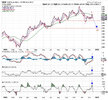
It has been more than one month since we last looked at this chart. Back then, we noted that gold stock corrections typically unfold in three distinct phases.
There’s the first decline phase, followed by an oversold bounce, which is then followed by another decline phase.
Last month, we suspected the gold sector was near the end of the first decline phase and was setting up for an oversold bounce. And, that’s what we got. HUI bounced off the support line near $290 and rallied all the way back up to test the resistance of the 50-day moving average line at about $312.
Now it looks like the gold sector is starting phase three.
And that’s a decline to a lower low that exhausts the selling pressure and sets the stage for a new, intermediate-term rally phase.
That’s where I’ll be looking to buy back into the gold sector – aggressively – especially if all the momentum indicators at the bottom of the chart can hold above their mid-November lows.
Regular readers know that I am a big fan of buying into trade setups that show “positive divergence.” (It’s all part of my Magic Pattern – check it out right here.)
So, if HUI declines to a lower low while the momentum indicators all make higher lows, we’ll have the exact setup that I prefer.
Right now, though, I’m not buying anything in the gold sector. It’s still too early.
But, keep an eye on the above chart over the next few weeks. If it plays out as I’ve described, then the gold sector could be set up for an excellent start to 2025.
Best regards and good trading,

Jeff Clark
Editor, Market Minute
Gold Could Start 2025 With a Bang
By Jeff Clark, editor, Market Minute
It’s still not quite time to buy gold and gold stocks.
The correction in the gold market, which started when the Gold Bugs Index (HUI) peaked above $350 in mid-October, still has more work to do on the downside.
Look at this updated chart of HUI…

It has been more than one month since we last looked at this chart. Back then, we noted that gold stock corrections typically unfold in three distinct phases.
There’s the first decline phase, followed by an oversold bounce, which is then followed by another decline phase.
Last month, we suspected the gold sector was near the end of the first decline phase and was setting up for an oversold bounce. And, that’s what we got. HUI bounced off the support line near $290 and rallied all the way back up to test the resistance of the 50-day moving average line at about $312.
Now it looks like the gold sector is starting phase three.
And that’s a decline to a lower low that exhausts the selling pressure and sets the stage for a new, intermediate-term rally phase.
The Next Phase in the Gold Correction
If it unfolds as I expect it to, then once HUI breaks below its November low – near $290 – it’s likely headed to the next support line at about $260.That’s where I’ll be looking to buy back into the gold sector – aggressively – especially if all the momentum indicators at the bottom of the chart can hold above their mid-November lows.
Regular readers know that I am a big fan of buying into trade setups that show “positive divergence.” (It’s all part of my Magic Pattern – check it out right here.)
So, if HUI declines to a lower low while the momentum indicators all make higher lows, we’ll have the exact setup that I prefer.
Right now, though, I’m not buying anything in the gold sector. It’s still too early.
But, keep an eye on the above chart over the next few weeks. If it plays out as I’ve described, then the gold sector could be set up for an excellent start to 2025.
Best regards and good trading,

Jeff Clark
Editor, Market Minute

